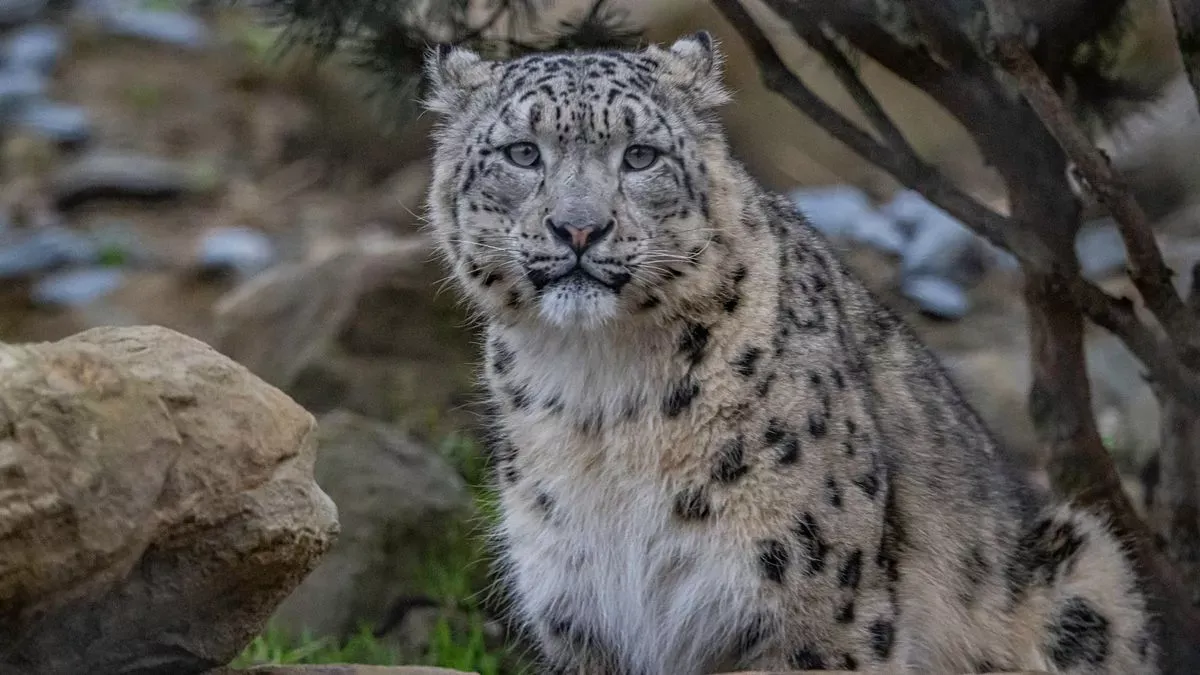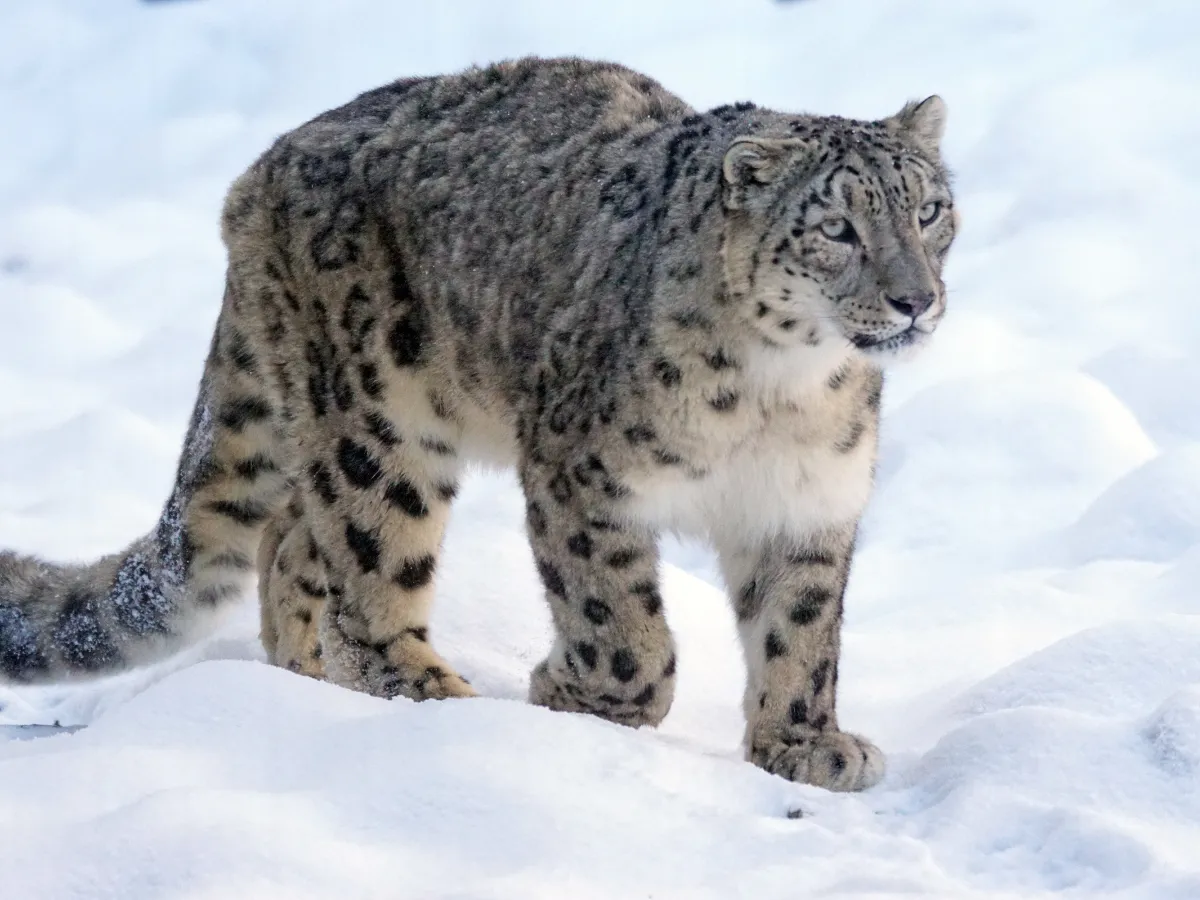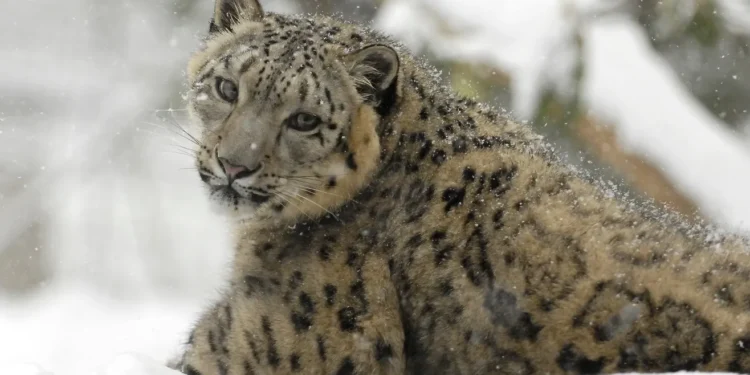In the rugged, snow-capped mountains of Gilgit-Baltistan, Pakistan, an innovative technology is being put to the test in a bid to save one of the world’s most elusive and endangered species. Snow leopards, known for their stunning beauty and near-mythical presence in the wild, are under severe threat from habitat loss, climate change, and increasing human-wildlife conflict. But could artificial intelligence (AI) help change the tide?

With only an estimated 4,000 to 6,000 snow leopards remaining globally, their future looks bleak. WWF Pakistan, in collaboration with Lahore University of Management Sciences (LUMS), has been working on a pioneering solution: AI-powered cameras designed to warn villagers about the presence of snow leopards near their livestock.
Lovely, the Orphaned Snow Leopard: A Story of Survival
At the center of this conservation effort is Lovely, a 12-year-old snow leopard who was orphaned as a cub and rescued in Pakistan-administered Gilgit-Baltistan. Having spent her entire life in captivity, Lovely cannot be released into the wild. “If we release her, she would just go attack a farmer’s sheep and get killed,” says her caretaker, Tehzeeb Hussain. Despite this, Lovely remains a symbol of the broader issue at hand: the delicate balance between conserving wildlife and protecting local livelihoods.
Each year, an estimated 221 to 450 snow leopards are killed, often in retaliation for livestock predation. Such deaths, combined with habitat encroachment and poaching, have led to a disturbing 20% decline in their population over the past two decades.
The Role of AI Cameras in Snow Leopard Conservation
Enter AI-powered cameras, which have the potential to offer a game-changing solution. The cameras, designed to detect the presence of snow leopards and alert local farmers via text messages, are part of an ongoing trial in three villages of Gilgit-Baltistan. This AI system is trained to differentiate between humans, other animals, and snow leopards with impressive accuracy.

As Asif Iqbal, a conservationist with WWF Pakistan, walks us through the rugged mountains of snow leopard territory, he explains the significance of these cameras. “These are pretty new tracks,” he says, pointing to the ground. “I’m hoping this means our system is picking up the presence of snow leopards.” The trial, which has been three years in the making, represents a critical step in protecting both snow leopards and local farmers’ livelihoods.
Overcoming Obstacles: Technology and Community Challenges
Despite the promise of this innovative technology, the road to success has been fraught with challenges. The extreme conditions in the region, including harsh winters and landslides, have tested the durability of the cameras and solar panels. “We went through several types of batteries until we found one that could survive the cold winters,” Asif shares. But even with technological setbacks, the team remains optimistic about the potential for these cameras to make a real difference.
However, the project’s success doesn’t just depend on the technology. Gaining the trust and cooperation of local communities has been a significant hurdle. In some villages, initial skepticism led to sabotaged equipment, including cut wires and cameras covered with blankets. Cultural sensitivities, such as concerns about privacy, also forced the team to relocate some cameras to avoid infringing on women’s privacy.
The Struggle of Local Farmers
For many farmers in the region, the snow leopards are seen as a threat to their livelihoods. Sitara, a local farmer, recounts the devastating loss of her sheep to a snow leopard. “It was three to four years of hard work raising those animals, and it all ended in one day,” she says, visibly shaken by the memory.
Others in the community share similar stories. A local farmer laments the drastic reduction in his herd, which has been decimated by both snow leopards and ibex. “We used to have 40 to 50 sheep, now we’ve only got four or five,” he says.

Despite the challenges posed by snow leopards, some villagers are beginning to see the bigger picture. According to WWF, snow leopards play a crucial role in maintaining ecosystem balance. By hunting ibex and blue sheep, snow leopards help prevent overgrazing, which in turn preserves grasslands for livestock grazing. However, convincing all farmers of the snow leopards’ ecological benefits remains an ongoing battle.
Legal Protection and the Role of AI in Future Conservation Efforts
Legal measures, such as penalties for poaching, have been somewhat effective in curbing the killing of snow leopards. In 2020, three men were jailed for killing a snow leopard in Hoper Valley, a stark reminder that conservation laws are not without teeth.
But technology, such as the AI cameras, is not expected to be a silver bullet. WWF’s conservation efforts will also include testing other deterrents, such as smells, sounds, and lights, to dissuade snow leopards from venturing too close to villages.

As the conservationists continue their efforts to protect these “ghosts of the mountains,” the hope is that the AI-powered cameras will be a step toward a brighter future for snow leopards, their habitats, and the farmers who share these rugged lands.
The work to protect snow leopards in Gilgit-Baltistan is far from over. But with cutting-edge technology and growing community awareness, there’s hope for a future where both snow leopards and local farmers can coexist. As Asif Iqbal says, “Tracking these magnificent creatures is an ongoing challenge, but it’s one we are committed to solving.”
This ambitious AI project represents a new frontier in wildlife conservation, blending cutting-edge technology with community cooperation. Could this be the breakthrough that saves the snow leopard from extinction? Only time will tell, but the signs are promising.










